Cantonese Pan Fried Noodles (Pork Lo Mein) – Our recipe for pan-fried noodles, also known as pork lo mein, is flavorful, savory, and mildly spicy. It’s a quick 30-minute meal made with fresh vegetables and stir-fried pork that is both tasty and healthy.
We frequently get into the habit of preparing either quick, calorie-efficient healthy dinners or comfort foods that we know our children won’t object to, such as grilled chicken salad or spaghetti with marinara.
There is absolutely nothing wrong with that. It’s beneficial to have a few go-to meals you can prepare without ever consulting a recipe.
Pork Lo Mein, also known as Cantonese Pan Fried Noodles, is a far cry from the conventional (mostly uninteresting) dinner options available today. There are plenty of mung bean sprouts, scallions, carrots, stir-fried pork loin, and skinny egg noodles in this dish.
How to make Pan fried Cantonese noodles
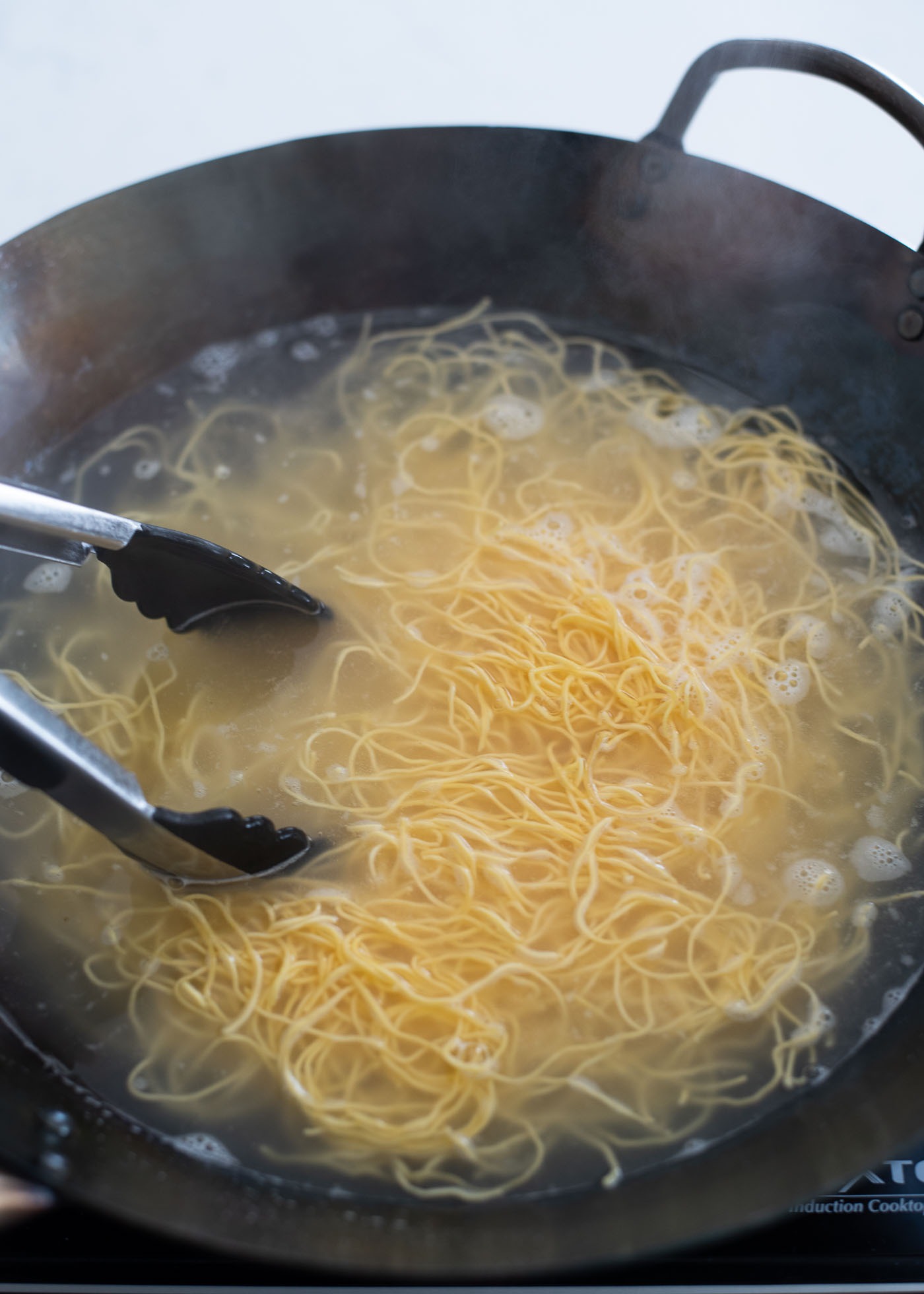
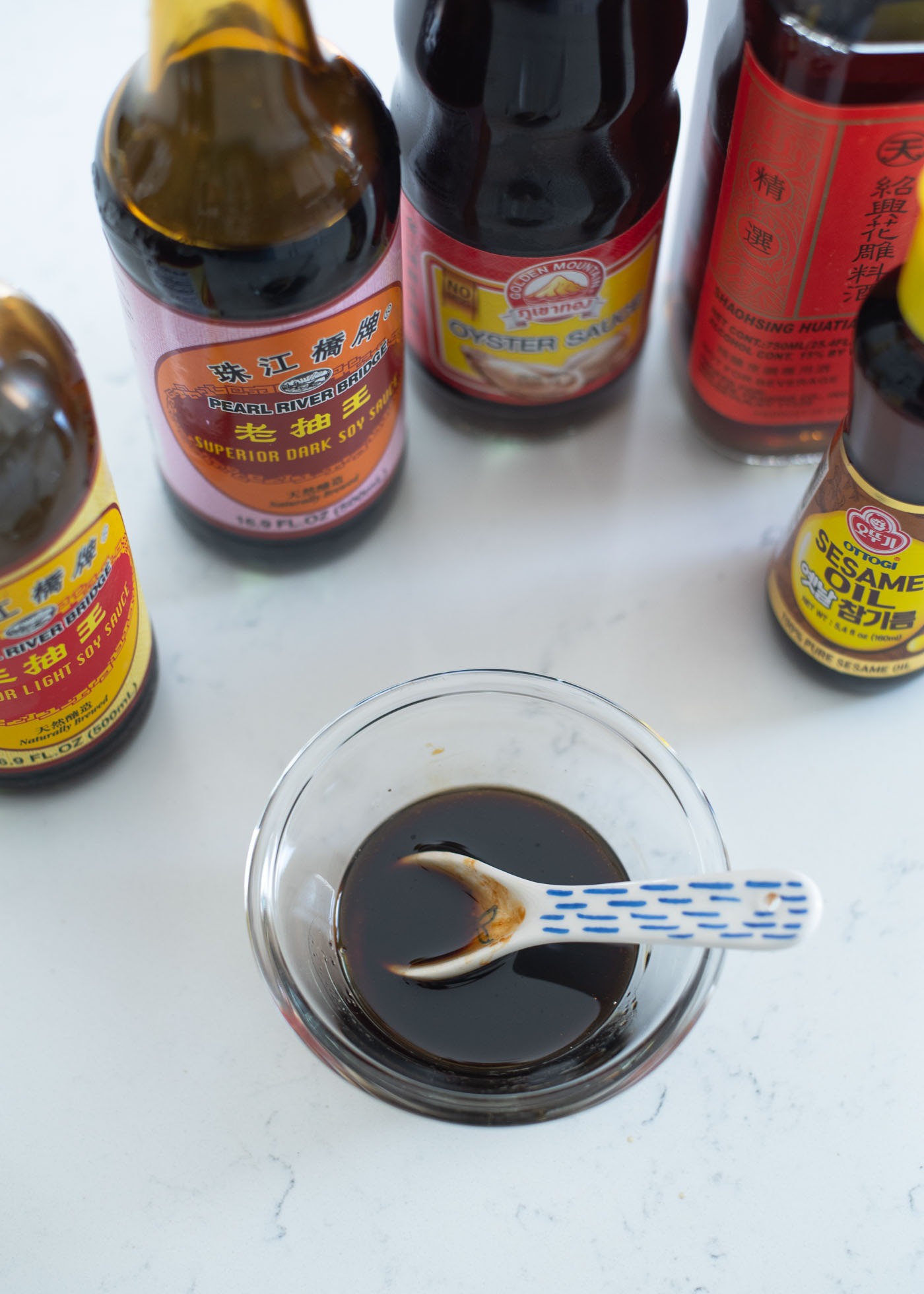
Step 1. Cook Hong Kong pan fried noodles in boiling water for the recommended amount of time on the package; typically, this is one minute for fresh noodles and three minutes for dried noodles. Drain noodles.
Step 2. Mix all of the sauce’s ingredients together in a small bowl.
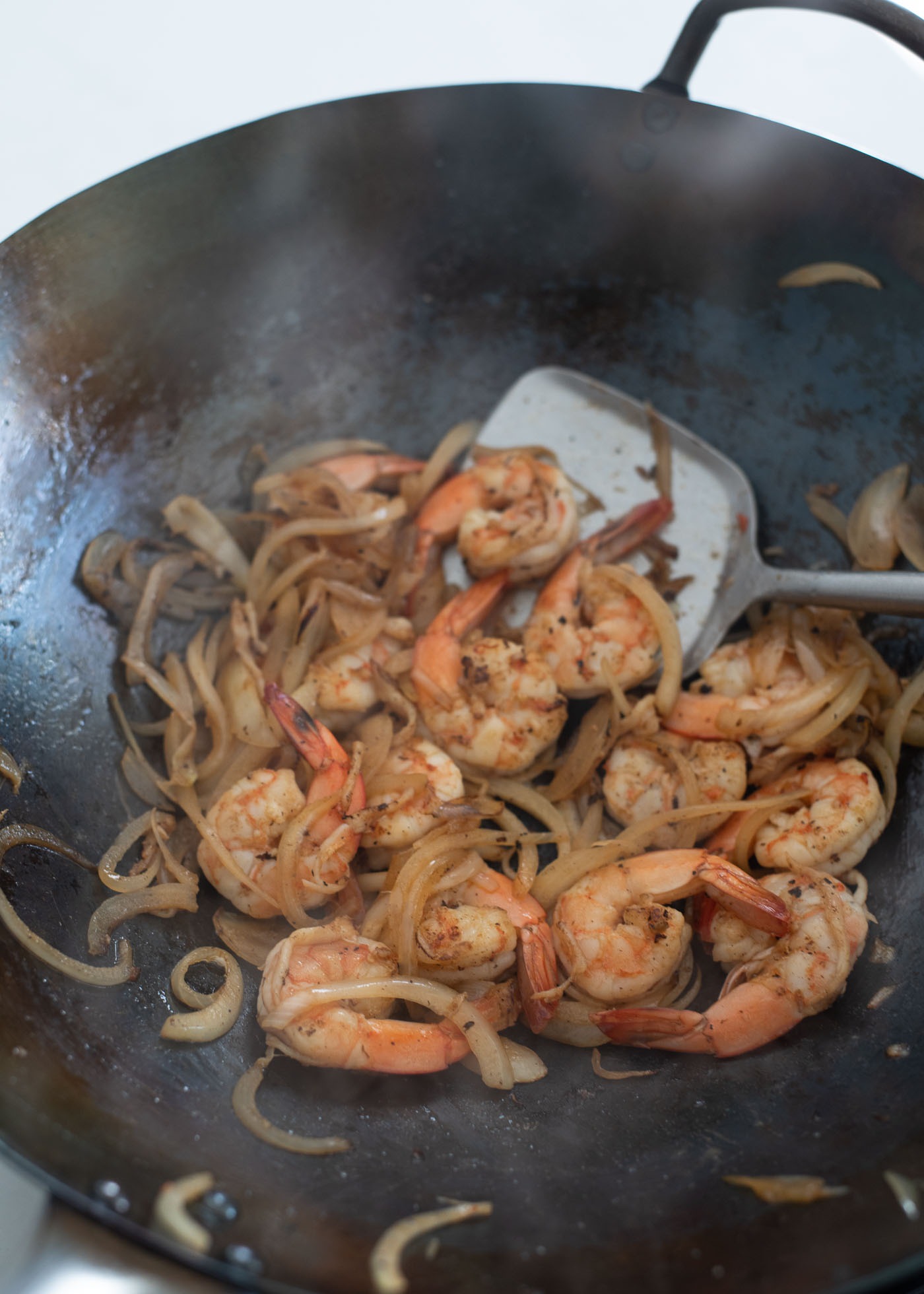
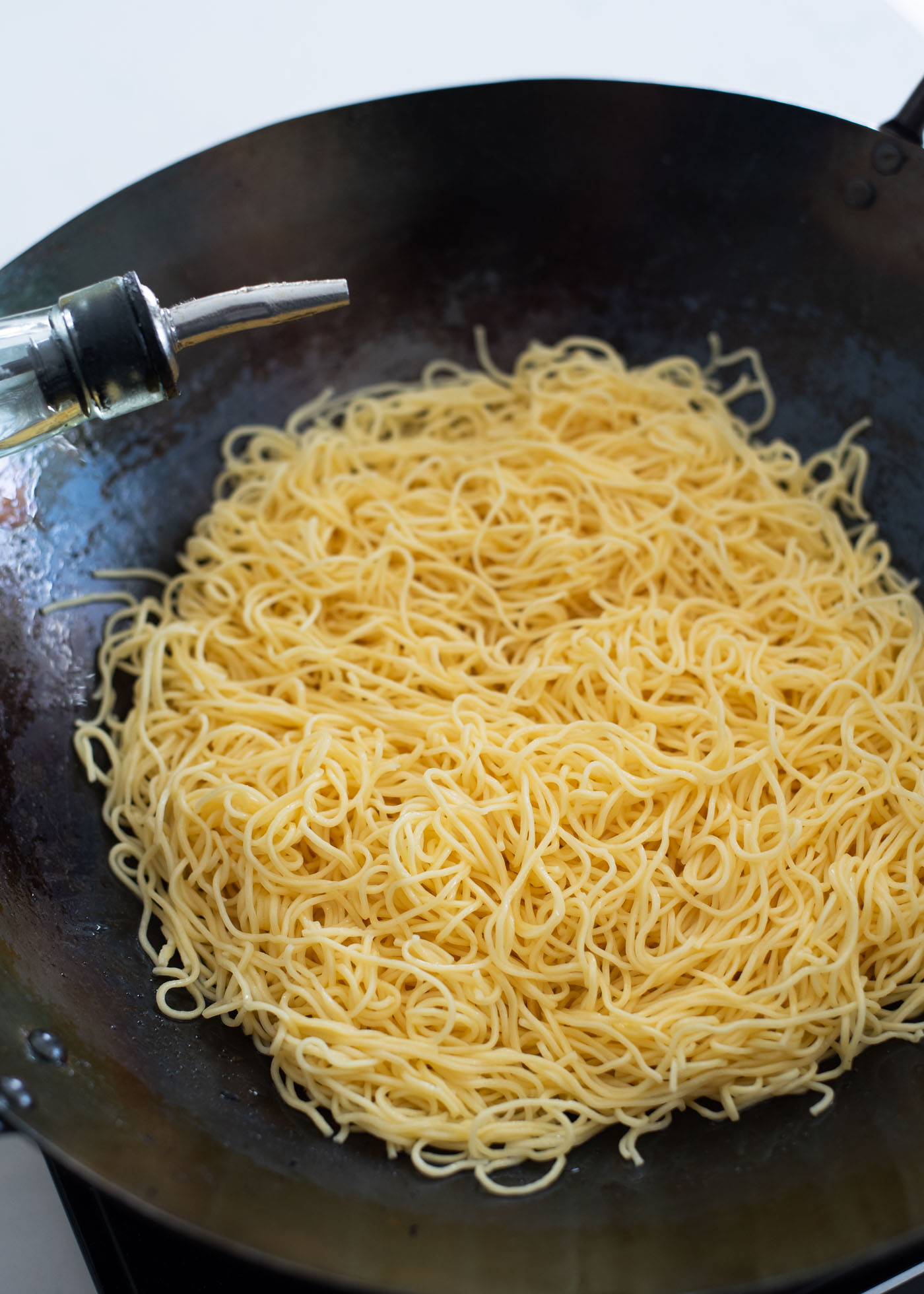
Step 3. Onion and shrimp (if using) are stir-fried in 1 tablespoon of oil over high heat until the shrimp is fully cooked. Remove from the wok and set aside.
Step 4. In a wok, heat 1 tablespoon of oil over high heat. Add the noodles and spread on the bottom of wok. While adding one more tablespoon of oil to the edges of the noodles to crisp them up, sear the noodles for one to two minutes.
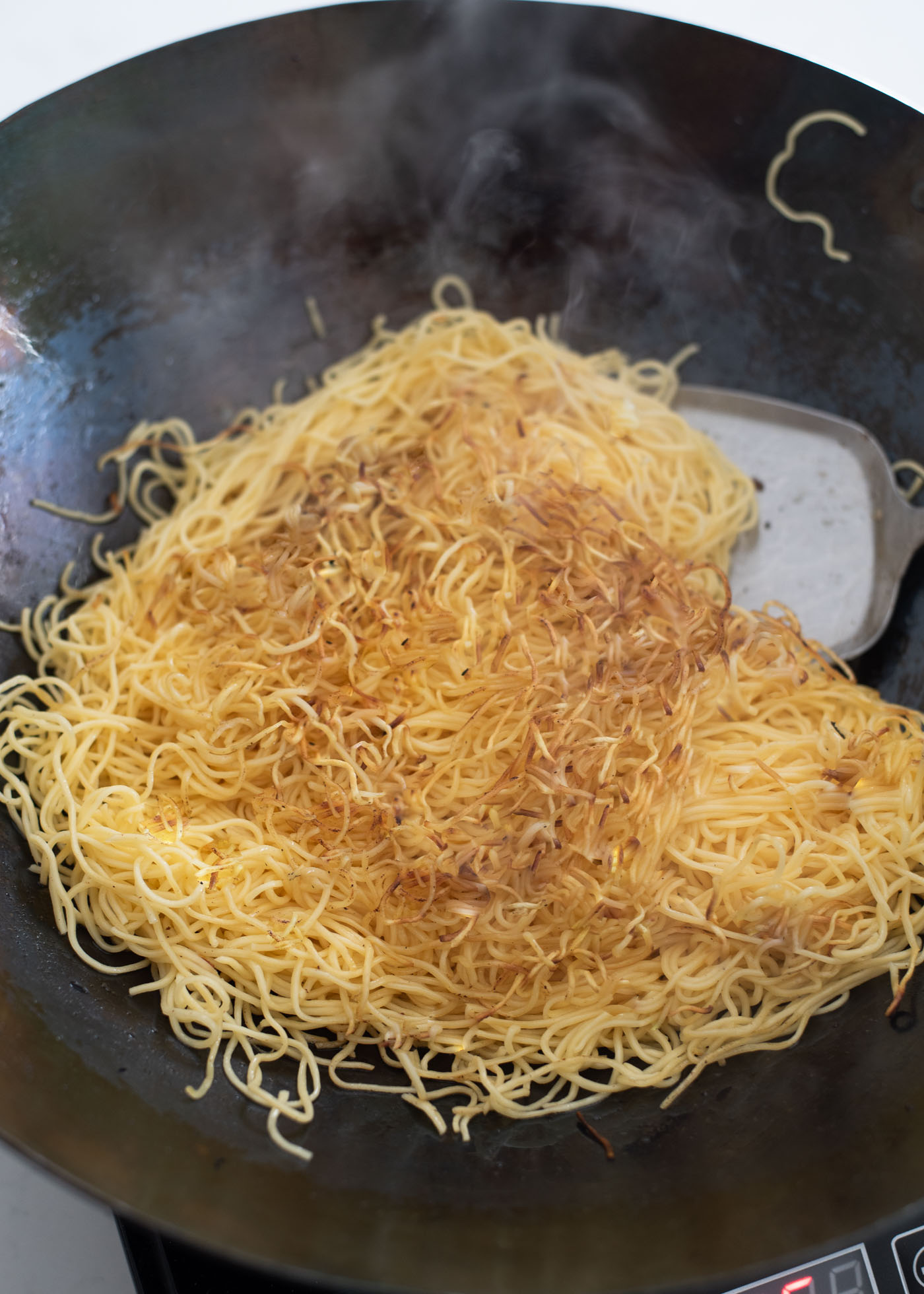
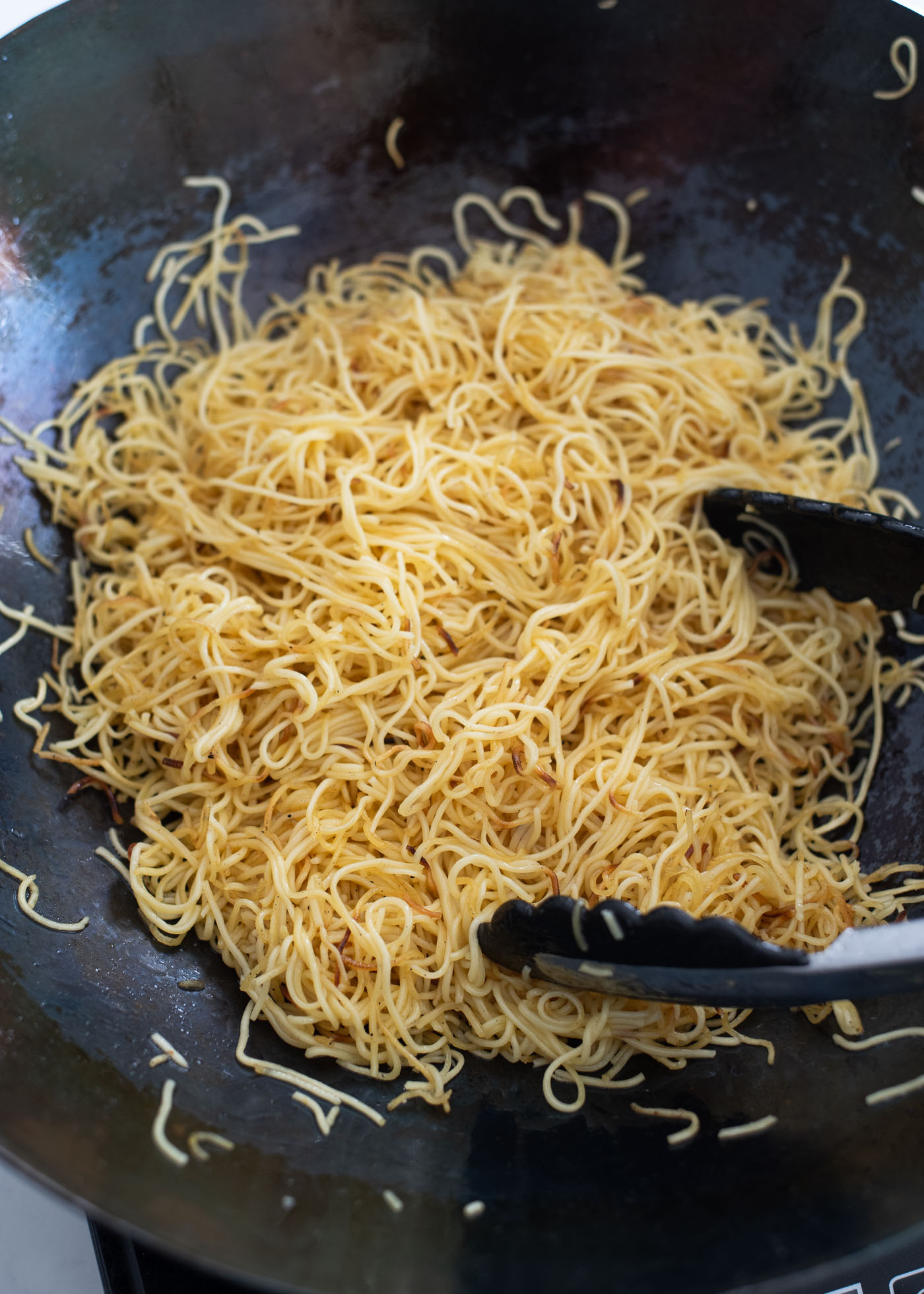
Step 5. The noodles should turn golden crisp and somewhat dry on the bottom before being turned over to the other side. After flipping the noodles, stir them with kitchen tongs or chopsticks, and stir-fry for an additional 1-2 minutes. Drizzle more oil if needed.
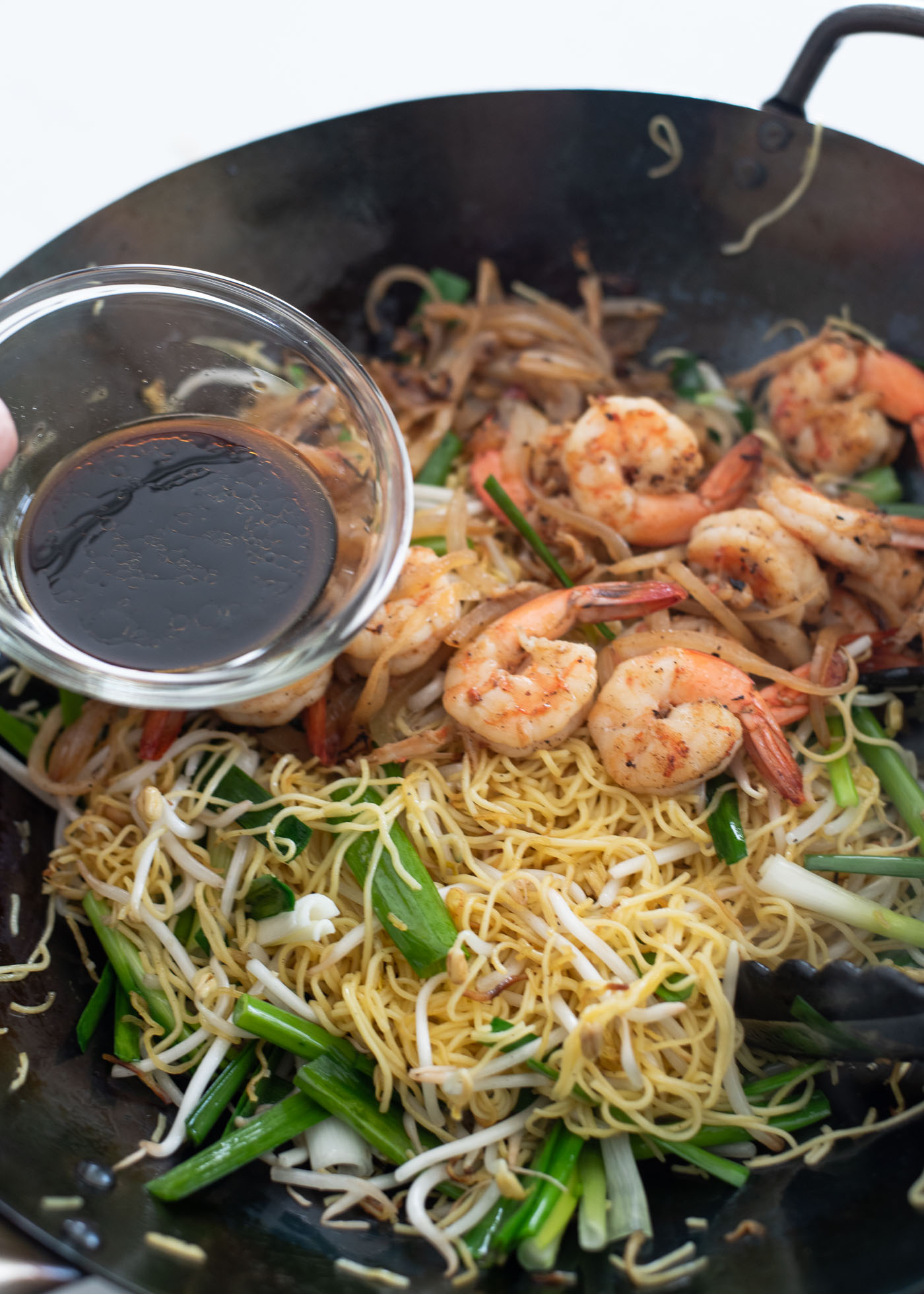
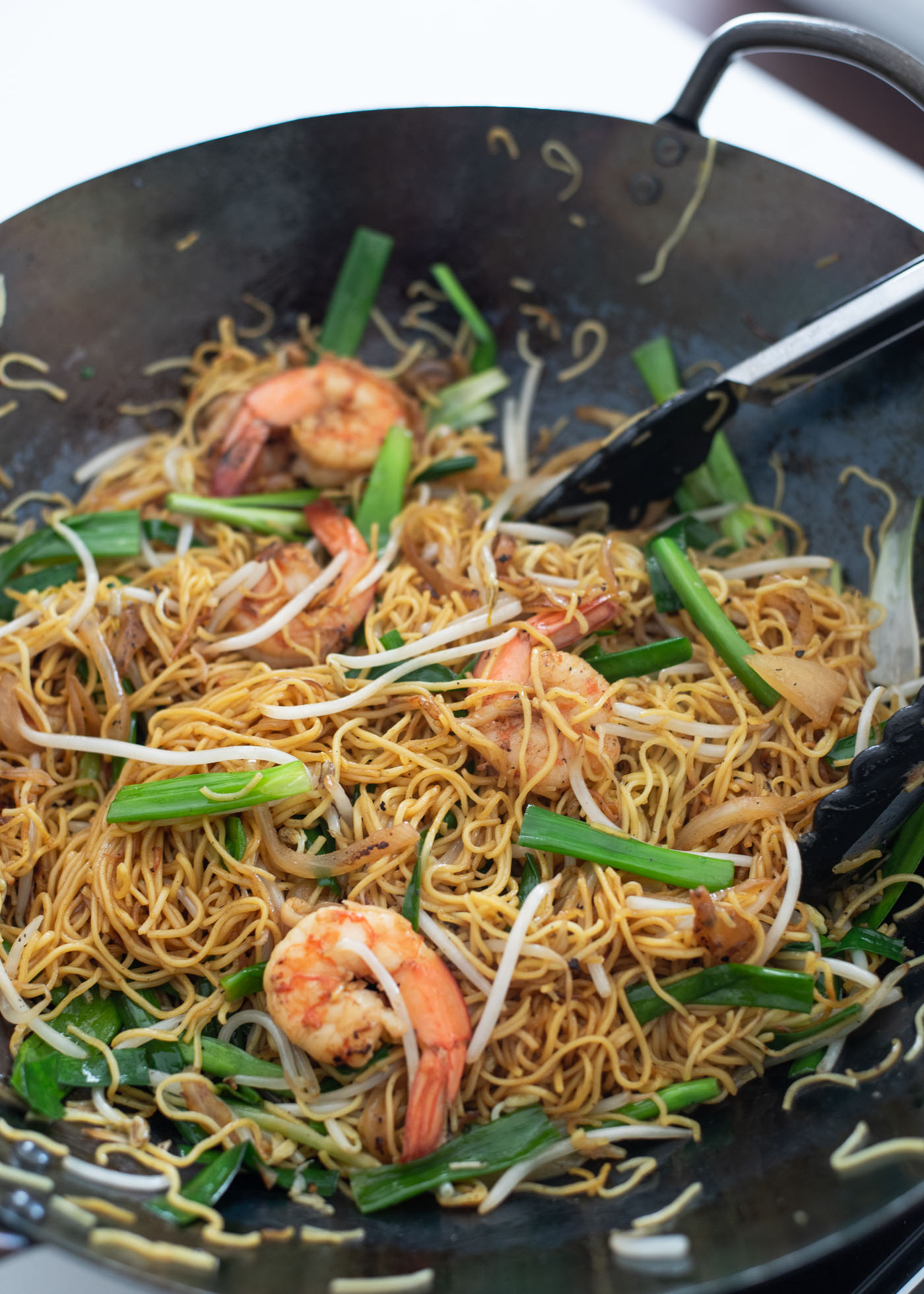
Step 6. Heat through the mung bean sprouts, green onion, and chives. Pour the sauce over the shrimp, onion, and bean sprouts, and toss for an additional 1 to 2 minutes, or until the bean sprouts just begin to become transparent.
To keep the sprouts’ crunchy texture, cook them just enough to soften them slightly. Do not overcook or they will become soggy and limp.
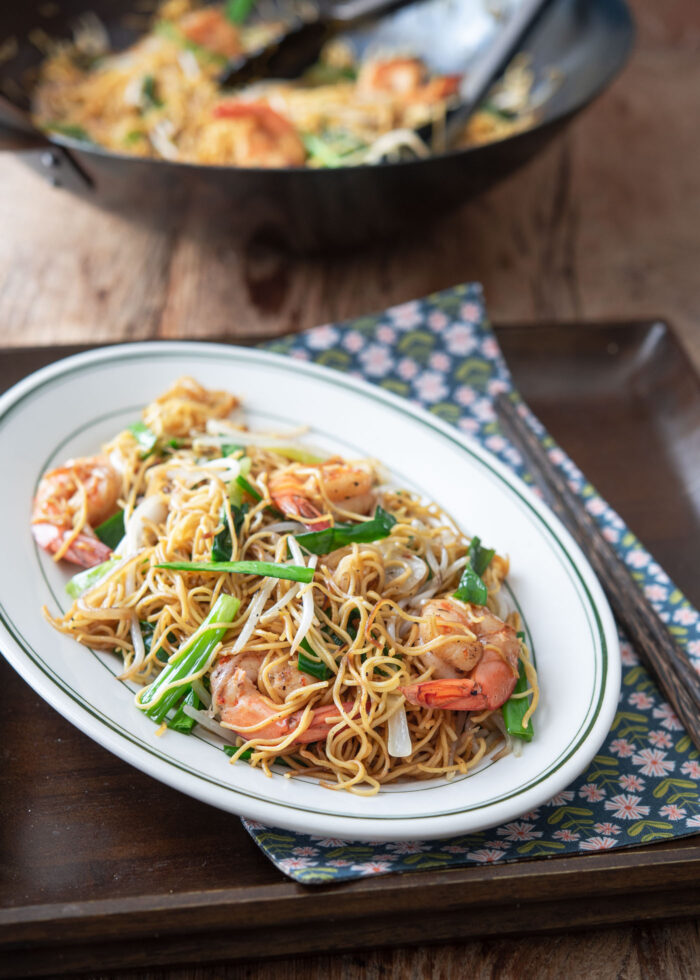
Serve immediately while hot. If you want to add some heat, you can drizzle a few drops of hot chili garlic sauce or sriracha sauce.
Enjoy the slurping sound! It’s a sign of deliciousness.
Try some of these easy and quick noodles dishes. The preparation time for these Asian noodle dishes is 30 minutes or less.
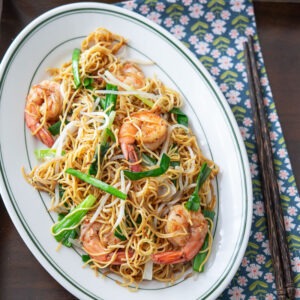
Why is it called Supreme Soy Sauce Chow Mein?
Supreme soy sauce chow mein is always served without meat.
The dish would then be known as “beef chow mein” instead of “supreme soy sauce chow mein” and you could cook it with beef or anything else you like. “.
Its named based on the most dominant flavor. The flavor of the soy sauce would be overpowered by the addition of beef, even if it were prepared exactly the same way.
Check out a quick story summary of our recipe!
IngredientsWeight: USozgVolume: UScupmLServings4
We discuss this a lot in the video, but we’ll be using fresh, pan-fried Hong Kong style noodles.
These are Chinese egg noodles, which come in a huge variety of types, flavors, and brands.
Here are three of the most popular Chinese egg noodles for simplicity’s sake: Wonton Mein, Lo Mein, and Chow Mein.
Chow Mein, also referred to as Hong Kong Style Pan Fried Noodles, is what we’ll need. To achieve the desired traditional flavor and texture profile, chow mein is the best type of noodle. Compared to Wonton Mein, they are thinner and contain fewer eggs.
You can also purchase the dried variety, boil it per the directions, cool it with water, and then follow our written instructions. My dad discusses this in our video during mealtime.
Around 2200 years ago, during the Han Dynasty in China, soy sauce was first recorded. Like congee and rice, soy sauce was initially created to stretch salt, a once-expensive ingredient. Since then, it has evolved into one of the most prevalent and significant ingredients in all of Asian cuisine.
There are numerous names and variations for soy sauce used throughout Asia, including “sih yàuh” in Cantonese.
Chinese soy sauce is traditionally made by fermenting grains and soybeans, brewing with salt, purifying, and pasteurizing it. It is then either kept for further aging or immediately bottled for distribution.
The main difference between dark and light soy sauce occurs in this last step.
Dark soy sauce is referred to as “lóuh chu” in Cantonese, which roughly translates to “old extract,” indicating that it has undergone a longer aging process than its younger sibling, light soy sauce, or “sang chu.” As well as molasses, mushrooms, and caramel coloring, dark soy sauce is frequently combined.
If you don’t have dark soy sauce, you can omit it and use light soy sauce instead, which is typically less expensive to purchase. Check out the links provided below to purchase dark soy sauce online.
In a typical grocery store, some of these ingredients are difficult to locate.
The majority or all of the ingredients my dad uses in this recipe can be purchased on Amazon if you don’t have access to an Asian market nearby:
I’ve also added some additional ingredients from the Chinese kitchen that my dad uses in many of his other recipes.
These links are affiliate links, so if you use them to buy these ingredients, Amazon will compensate my family with a small commission at no additional cost to you. If you use these links, we really appreciate the support!.
We have three options for you if you need to avoid gluten or are a vegetarian.
Vegetarian Oyster Sauce
Here are some substitutes that taste similar to oyster sauce but don’t use actual oysters because oyster extract is what makes it, in the first place:
Gluten Free Oyster Sauce
Wok Mei has a gluten-free oyster sauce, but it still contains oyster extract, so its not vegetarian friendly .
Vegetarian + Gluten Free Oyster Sauce
You will need to make the sauce yourself because, regrettably, we are unaware of a vendor who sells oyster sauce that satisfies both dietary requirements.
Mix equal parts gluten free soy sauce and gluten free hoisin sauce. This isnt exactly the same as oyster sauce, but its pretty close.
Youll need a good wok, which provides a ton of versatility for the classic Chinese cooking methods: steaming, stir frying, deep frying, and etc.
If youre using fresh, unsteamed chow mein noodles, itll help to buy a steamer rack with holes. Otherwise, you can use a regular steamer rack and steam the noodles on a plate for an extra 2-3 minutes than my dad prescribes in this recipe.
FAQ
What does Cantonese style noodles mean?
The noodle texture is soft and a little chewy. Cantonese style chow mein noodles are crispy. They are often made with wheat flour and thin noodles. They can either be deep-fried or pan-fried until crispy. Lo mein, chow mein.
What is difference between chow mein and Cantonese noodles?
Americanized chow mein is more flavorful, a little saltier, and frequently pairs broccoli, chicken, and carrots with other ingredients. Chow mein found in China is much more delicate. Actually, the soft and elegant flavor profiles of traditional Cantonese cuisine are its main selling point.
What are Cantonese noodles made of?
Wheat, buckwheat, rice, millet, oats, beans, potatoes, sweet potatoes, and even fish can be used to make Chinese noodles. There are currently more than 1,200 different varieties of noodles popular in China. Lye-water or egg. Common English nameThin noodlesCharacters幼面 幼麵Cantonesejau minHokkieniù-mī.
What does Cantonese noodles taste like?
A hybrid of pan-fried noodles, garlic noodles, and chow mein, Cantonese pan-fried noodles are thin, slightly crispy noodles. These spicy, savory, flavorful noodles are stuffed with vegetables and very adaptable.
